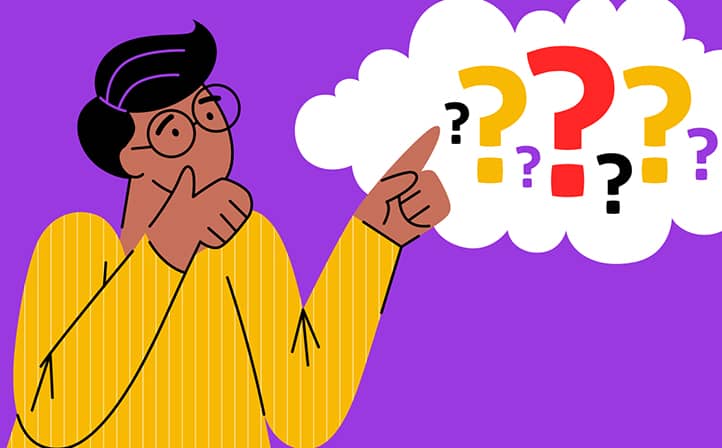The Availability Heuristic is a cognitive strategy people use to assess the likelihood of events based on how easily examples of those events come to mind. This term was first described by psychologists Amos Tversky and Daniel Kahneman in the 1970s.
The core idea is that if a person can quickly recall an instance related to a certain event, they are inclined to believe that this event is more likely or frequent than it actually is. For example, a person might overestimate the frequency of plane crashes after seeing news about a similar tragedy.
The availability heuristic is based on the brain’s mechanism of cognitive economy. Our brain processes enormous amounts of information, and to optimize this process, we often rely on simplified approaches (or “heuristics”) to make decisions more quickly.
The availability heuristic is a popular cognitive tool because of its convenience and effectiveness in everyday situations. It allows people to navigate circumstances quickly when there isn’t enough time or resources for thorough analysis.
Main Reasons for the Prevalence of This Strategy:
- The brain’s natural energy-saving function. The mind strives to reduce cognitive load by simplifying information processing.
- The vast amount of information in the modern world. We constantly encounter media, social networks, and news, which shape our perception of event probabilities.
- The emotional vividness of events. Events that evoke strong emotions (fear, joy, surprise) are easier to remember and become more “available” for recall.
The availability heuristic plays a significant role in many aspects of our lives. In everyday situations, it helps make quick decisions but can also lead to serious mistakes.
- In Everyday Life. We often assess risks based on recent or vivid examples. For instance, if a neighbor catches the flu, a person might overestimate their own risk of infection, even if statistics indicate a low probability.
- At Work. In business and management, the availability heuristic can influence strategic decisions. For example, a manager might overestimate the success of a marketing campaign based on a positive first impression while ignoring more objective indicators.
- In Decision-Making. People tend to simplify complex situations by relying on the most prominent examples. This is often evident in fields like finance (overestimating investment risks), education (choosing a university based on online reviews), or medicine (self-diagnosis using Google search results).
The availability heuristic is not always a negative phenomenon. Its effectiveness depends on the context of its application:
- Positive Aspect. In everyday situations where detailed analysis isn’t required, the heuristic allows for quick decision-making. For example, during emergencies (choosing a safe path in case of a fire), we might rely on the most accessible memories of similar cases.
- Negative Aspect. When a situation requires analysis and objectivity, a simplified approach can lead to mistakes. For example, a person who frequently hears news about bank fraud might overestimate the risk and reject a profitable financial offer.
Thus, the availability heuristic is both a useful tool and a potential source of cognitive biases. It is an integral part of our thinking, and understanding its mechanisms can help us manage our decisions more effectively and avoid common errors.

The Availability Heuristic as an “Enemy” of Rational Thinking
The availability heuristic is a powerful tool of our thinking, but it does not always serve rational analysis. This cognitive strategy can lead to flawed judgments and biases, especially when we evaluate complex or risky situations by relying solely on the most vivid memories or examples.
Human memory is selective, and our brain automatically makes “shortcuts,” simplifying the information processing. This often results in a distorted perception of reality. For instance, events that recently occurred or caused strong emotions are perceived as more likely than events that are less noticeable but occur more frequently.
Errors Caused by the Availability Heuristic
By simplifying the thinking process, the availability heuristic simultaneously becomes the source of numerous cognitive biases and errors. It makes us rely on the most vivid or emotionally charged examples in our memory, ignoring factual data and statistics. This influences how we perceive risks, forms stereotypes, and alters our attitudes toward information depending on its emotional context, significantly distorting the real picture of the world.
Risk Perception: Overestimating Danger
The availability heuristic often causes us to overestimate the likelihood of dangerous events that are vividly covered in the media or strongly imprinted in our memory. For example, after a plane crash, many people fear flying, even though statistically, it is the safest mode of transportation.
1. Why does this happen?
- Our brain automatically associates the likelihood of an event with its emotional significance. Plane crashes are rare but very dramatic events that are remembered better than daily car accidents.
- We perceive vivid examples as typical, ignoring the statistics.
2. Consequences:
- People avoid air travel even when it is less risky than driving a car.
- Overestimating rare risks can lead to improper allocation of resources to avoid them.
The Problem of Stereotypes: How Accessible Information Forms Biases
Stereotypes often stem from examples that are easy to recall. For instance, if someone repeatedly hears about crimes associated with a specific social group, they may form biases against all its members.
1. How does the mechanism work?
- Easily accessible information (e.g., news or rumors) creates the impression that a certain group or phenomenon is problematic, even when real data suggests otherwise.
2. Impact on society:
- Biases can influence social relationships, political decisions, and even the legal system.
- People start thinking in categories, ignoring individual differences.
The Influence of Emotions on Perception of Facts
Emotionally charged information easily becomes “accessible” for recall, even if it is distorted or inaccurate. This can affect our judgments.
1. Examples:
- People fear sharks more than mosquitoes, although mosquitoes kill thousands more people due to disease transmission. The reason is the dramatic scenes of shark attacks in movies or news.
- After watching alarming news, people may overestimate the likelihood of disasters or conflicts.
2. Result:
- Decisions are made based on emotions rather than facts.
Examples of the Availability Heuristic’s Influence
The availability heuristic not only impacts our thinking but is also actively used to manipulate public consciousness. Mass media, advertising campaigns, and political figures constantly exploit this mechanism, creating distorted perceptions of event frequencies, risks, or the significance of certain products. This enables them to shape people’s behavior in a desired direction, often disregarding real facts and objective analysis.
The Role of Media in Creating “Information Traps”
The media actively uses the availability heuristic to capture audience attention. Dramatic headlines, emotional stories, and shocking news quickly become “accessible” in our memory but simultaneously distort reality.
1. How does it work?
- Frequent coverage of events creates the impression that they occur much more often than they actually do. For example, news about terrorist attacks can create a sense of constant danger, even though their global numbers are decreasing.
- Media focuses on events that evoke fear to secure high ratings.
2. Consequences:
- People start avoiding certain places or events due to fear provoked by the media.
- A distorted perception of real-world risks is formed.
How Advertising Campaigns and Manipulations Exploit This Mechanism
Marketers and political figures are well aware of the power of the availability heuristic and often use it to influence their audience.
1. Examples in advertising:
- Commercials create emotional images that are easy to recall, even if the product has other important characteristics.
- Famous brands show successful people using their products to create an association between the product and success.
2. Examples in politics:
- Politicians use vivid examples to draw attention to specific issues, even if they are secondary. For instance, a single case of lawbreaking can be used to justify stricter legislation.
3. Consequences of manipulation:
- People make decisions based on emotions rather than rational analysis.
- Biases or support for products or ideas without objective advantages are formed.
The availability heuristic, although a natural part of our thinking, can become a serious obstacle to objective analysis, generating distorted perceptions of the world. Understanding these mechanisms can help avoid common mistakes and make more conscious decisions.

Availability Heuristic as an “Ally” of Rational Thinking
The availability heuristic is often associated with cognitive errors, but it can also become a reliable ally in many situations. Its strength lies in the quick access to information, allowing us to react promptly and adaptively in a world filled with complexity and uncertainty. In many cases, this cognitive mechanism helps avoid overloading the brain with details, focusing instead on the most critical aspects.
Rational thinking does not always mean prolonged analysis and deliberation. Often, it involves making optimal decisions in a short time with limited resources. In such situations, the availability heuristic becomes an indispensable tool, enabling quick assessments of situations based on prior experience or available knowledge.
Speed and Efficiency in Decision-Making
In a world where decisions often need to be made instantly, the availability heuristic becomes a reliable assistant. It allows for quick information processing and finding optimal responses to challenges using accessible examples stored in memory. This mechanism is especially valuable in crisis conditions, where reaction speed can be crucial.
How Does the Heuristic Enable Quick Reactions in Complex Situations?
In complex and crisis situations requiring immediate action, the availability heuristic becomes vital. It allows the brain to quickly choose a course of action based on examples or memories that readily come to mind.
- Mechanism of Action:
- Imagine you are in a room that suddenly fills with smoke. Deliberating whether it’s a fire and searching for all possible sources of ignition is dangerous. The availability heuristic suggests a solution: exit through the door and escape because you have seen or heard about similar situations before.
- In such cases, reaction speed is more important than deep analysis.
- Real-Life Examples:
- Doctors in emergency situations often rely on examples in their memory to diagnose a patient’s condition and quickly choose a plan of action.
- Drivers respond to unexpected circumstances on the road based on prior experience or the quickest associations.
Examples Where the Availability Heuristic Helps: In Crisis or Uncertain Conditions
When situations are not only complex but also uncertain, the availability heuristic can be a true lifesaver. It helps determine the most likely scenarios by using past experience or knowledge.
- Crisis or Risk:
- A person who sees someone drowning might recall how rescuers acted in similar situations from movies or news and quickly decide how to help.
- During natural disasters, people often use memories of previous events to quickly find safe shelter.
- Uncertainty:
- In situations where there is no clear information, the heuristic allows for evaluating the probability of events based on the most noticeable examples. For instance, an investor might make a decision about an investment based on recent successful deals.
A Tool for Learning and Adaptation
The availability heuristic not only aids in decision-making but also serves as a powerful tool for learning and adaptation. Thanks to the brain’s ability to use accessible examples and associations, complex concepts become more understandable, and new information easier to absorb. This mechanism is actively used in education and supports adaptation to changes by reducing cognitive load and improving outcomes.
Using Accessible Information to Simplify Complex Concepts
The availability heuristic plays a key role in simplifying complex ideas or processes, making them understandable to most people.
- Examples of Use:
- In Education: Teachers use vivid examples or comparisons to help students better understand complex concepts. For instance, the concept of electric current can be explained through an analogy with water flowing through pipes.
- In Everyday Life: We are more likely to remember instructions illustrated with examples than plain text.
- Effectiveness:
- Simplification through accessible examples allows for faster understanding of complex material. This reduces cognitive load and makes learning more effective.
Availability Heuristic as the Basis for Effective Learning (Through Associations)
Associative thinking, often based on the availability heuristic, is a powerful tool for consolidating knowledge. Vivid examples and accessible memories help to absorb new information and quickly adapt to changes.
- How It Works:
- When information is linked to something familiar and easily accessible in memory, it is better retained. For instance, students learning a new language grasp vocabulary faster through associations with their native language or familiar objects.
- Real-Life Examples:
- Educational games use vivid images and associations to reinforce new knowledge in children.
- Training programs for adults often incorporate case studies—real-life examples that are easy to remember and apply in practice.
The availability heuristic, despite its reputation as a source of cognitive biases, can be highly beneficial. It enables quick responses to challenges, simplifies complex concepts, and facilitates the absorption of new knowledge, making this process efficient and adaptive. Thoughtful use of this mechanism allows us to harness the advantages of our thinking with minimal effort.

The Balance Between the Availability Heuristic and Rational Thinking
The availability heuristic is a powerful cognitive tool that allows us to make decisions quickly and with minimal resource expenditure. However, its overuse can lead to errors and distortions in thinking. Striking a balance between the availability heuristic and a rational approach is a key task for those who strive to think effectively and objectively.
In some situations, the availability heuristic helps save time and resources, but there are cases where relying on it is inappropriate. It’s important to understand when its application is beneficial and when a more detailed analysis is warranted. There are also methods to reduce the negative impact of this heuristic, such as developing critical thinking or employing structured approaches to data analysis.
When Is the Heuristic Useful and When Is It Harmful?
The availability heuristic can be both a useful tool and a source of errors, depending on the situation in which it is applied. Its advantage lies in the speed of decision-making and its ability to simplify complex tasks, but this same feature becomes a drawback in the context of complex problems that require detailed analysis. Defining the limits of its application is crucial for avoiding false conclusions and improving the effectiveness of thinking.
Defining the Limits of Its Application
The availability heuristic is effective in situations where speed and simplicity in decision-making are more critical than precision. However, its application may be limited in complex issues that require in-depth analysis.
1. Advantages of the heuristic:
- In high-uncertainty situations where time is limited, the heuristic helps avoid cognitive overload. For example, during emergencies, a person quickly chooses a familiar course of action, which can save lives.
- For routine decisions that do not require detailed analysis, the heuristic is an optimal choice.
2. Drawbacks of the heuristic:
- When a problem requires precise calculations or multifactor analysis, relying solely on available information is dangerous. For instance, an investor evaluating risks based only on recent news might overlook other important factors.
How to Recognize Situations Where Logic Should Take Precedence
Learning to recognize moments when it’s better to step away from an intuitive approach is an important step toward balancing the heuristic and rational thinking.
1. Key indicators:
- The presence of significant risks or long-term consequences. For example, choosing a profession or business strategy requires detailed analysis.
- The complexity of the problem and the large number of factors that need to be considered.
- Situations with a high likelihood of manipulation, such as selecting financial products.
2. Practical advice:
- If a decision is not urgent, always take time to evaluate additional data.
- Analyze your own thoughts to determine whether they are based on vivid examples that might be subjective.
Methods to Reduce the Negative Impact of the Availability Heuristic
The negative impact of the availability heuristic can be minimized through a conscious approach to information analysis. Developing critical thinking, verifying sources, and using alternative strategies for data analysis are key methods for avoiding biases and distortions. These skills help make more well-founded decisions, maintaining a balance between speed and accuracy in thinking.
Critical Thinking: Verifying Information Sources
Developing critical thinking is one of the most important ways to minimize the negative impact of the availability heuristic.
1. How it works:
- Critical thinking allows for the verification of information sources and analysis of their reliability. For instance, before drawing conclusions about the risks of air travel, it is important to evaluate statistics, not just recall the latest plane crash reported in the news.
- Asking questions like “What evidence supports this claim?” or “Are there alternative perspectives?” helps avoid bias.
2. Practice:
- Learn to seek objective sources of information. For example, when analyzing health topics, rely on scientific research rather than popular articles.
- Compare data from multiple sources to avoid a distorted view of reality.
Using Alternative Strategies for Data Analysis
Instead of relying solely on intuitive thinking, it is useful to apply structured methods of data analysis.
1. Alternative strategies:
- Statistical analysis. Use facts and figures to assess a situation. For example, before purchasing stocks, study analytical reports instead of relying solely on a company’s popularity.
- Mental models. Employ proven thinking models, such as cost-benefit analysis or scenario planning, to account for all possible options.
2. Real-life examples:
- When planning a family budget, it is better to use expense and income tables rather than relying on an approximate estimate based on recent purchases.
- In business decision-making, tools like SWOT analysis or other strategic planning methods are often employed.

Conclusions
The availability heuristic is an integral part of our thinking, performing both positive and negative functions. It enables us to react quickly and effectively to challenges by using readily available information from memory and often aids in everyday decisions and uncertain situations. However, this ability to simplify can also lead to errors, biases, and distortions in perceiving reality.
The availability heuristic is both our ally when it comes to efficiency and our adversary when a deep analysis is required. Its dual nature underscores the importance of understanding this mechanism for more informed decision-making.
Understanding the principles of the availability heuristic allows us to leverage its strengths while minimizing the risks it entails. In everyday life, this knowledge can help avoid manipulation, stereotypes, and hasty conclusions. For example, instead of relying on first impressions or a vivid example, we can consciously seek additional data or consider alternative options. Awareness of this cognitive mechanism also encourages the development of critical thinking, information verification, and systematic analysis.
Achieving a successful balance between intuitive and rational thinking requires continuous self-improvement. Combining intuition with a logical approach enables us to think both quickly and soundly. Instead of avoiding heuristics altogether, we can learn to recognize when they are helpful and avoid their influence in situations where it is inappropriate.




